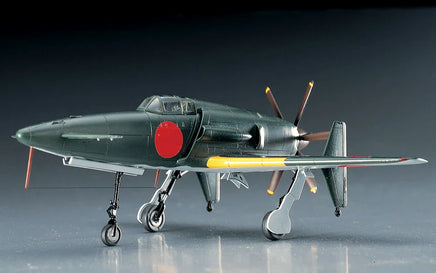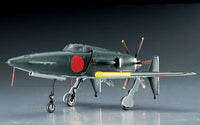The Shinden
The Shinden made its first flight on August 3, 1945, during the final stages of World War II and the Pacific War, at Mushiroda Airfield in Kyushu.
This aircraft had a very unusual design. Its main wings were positioned toward the rear, while small forewings—normally referred to as horizontal stabilizers—were placed at the front. The engine was mounted in the rear of the fuselage, and the propeller was installed facing backward in a pusher configuration.
This layout is called a canard (or "ente") wing design. Since there is no propeller at the nose, machine guns could be mounted in the center of the fuselage, improving accuracy. Additionally, the smoother fuselage shape allowed the aircraft to achieve higher speeds.
The Shinden was designed to engage long-range bombers like the B-29. However, the war ended on August 15, just days after its first flight, and the aircraft never had a chance to see combat.
Specifications
- Crew: 1 pilot
- Wingspan (main wings): 11.11 m
- Length (to rear of propeller spinner): 9.76 m
- Height (to tip of vertical tail from the ground): 3.92 m
- Engine: "Ha-43" Model 42 air-cooled engine
- Engine output: 2,030 horsepower
- Maximum speed: 750 km/h at an altitude of 8,700 m
- Armament: Four 30mm cannons mounted in the fuselage
Note:
The listed speed is the planned top speed at the optimal altitude—where the aircraft performs most efficiently in terms of air pressure and temperature. This altitude varies by aircraft type. Because the Shinden's development was cut short and its testing period was brief, the top speed listed is the projected performance based on plans, not confirmed test data.




